In various industries, die casting and injection molding are two of the most used manufacturing processes. The production of many materials we use domestically, in offices, and other establishments utilized either of these techniques. For example, your kid’s toys and kitchen sink are fabricated with injection molding and die casting, respectively.
While these processes are pretty similar, there are some differences between them. You probably already have a lot of questions. Which is better? Which is cheaper? Or something entirely different. Do not be troubled. Read on as we discuss the die casting vs injection molding comparison in detail.
Die Casting
Die casting is the manufacturing process that involves casting metal under extreme force. The process involves heating metals into their molten form. Then, the liquefied metal is remolded under high-pressure conditions. This process has been known to man for a long, long time. As far back as the mid-19th century.
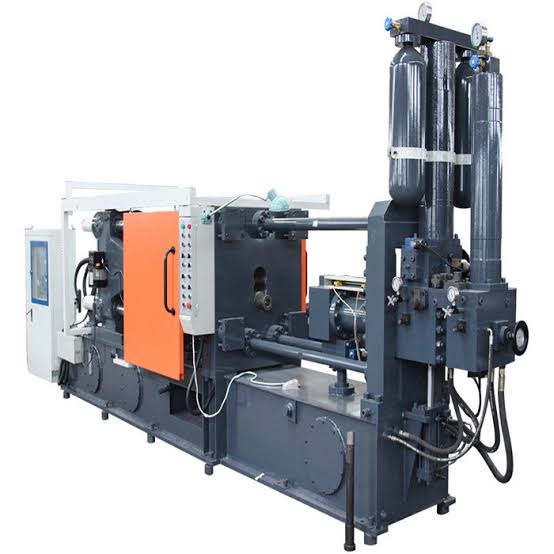
Since the metals are in molten form during this process, die casting is suitable for manufacturing geometrically complex parts. Equipment needed for the method includes a die casting machine with a built-in or separate furnace, where the raw material – the metal is heated to liquid. The metal is usually aluminum, zinc, or copper – essentially non-ferrous metals.
Process: Steps Involved in Die Casting
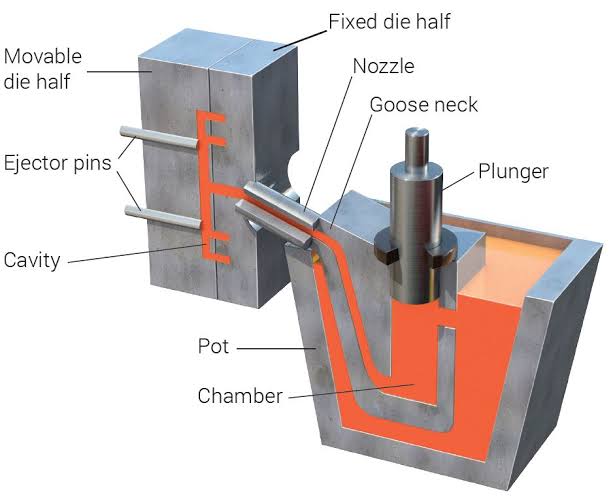
Due to the high pressure involved in the die casting process, we sometimes referred to it as high-pressure die casting. There are essentially four steps involved in this process.
Step 1: Die Preparation
Spray the mold cavity with a lubricant. Lubrication aids in regulating the temperature inside the die and easing the removal of the die-cast. After lubrication, the die is ready for use. Close the mold.
Step 2: Filling
After closing the mold, molten metal is injected into the die under high pressure. The high-pressure condition is maintained as the liquid metal rapidly cools, taking the shape of the die.
Step 3: Cooling
Immerse in (or spray with) water to quicken cooling.
Step 4: Ejection
Once the mold is cool, open the dies to eject and collect each shot. Shots are not the same as castings. A die may contain more than one mold cavity. Each cavity gives rise to individual castings. All the castings from a mold cavity are known as shots.
Pros of Die Casting Process
There are many benefits manufacturers stand to gain from using the die casting technique. It is essential to know these benefits as they aid in decision-making during the manufacturing process. Some of the advantages include:
- Die casting allows for a smooth, easy and quick production process.
- It is a highly efficient process that reduces the need for other secondary operations.
- Products of die casting are highly reproducible. Allows for mass production of exact duplicates and brings about originality.
- Geometrically complex parts are easy to manufacture with the proper precision and accuracy.
- Products of die casting tend to have a good surface finishing. Hence, reducing the cost for extra finishing.
- The products are highly durable. Their acquired tolerance during production is one reason for this.
Cons of Die Casting Process
As you’d expect, a manufacturing process with its benefits would also have some limitations. Some of the cons of die casting are:
- Die casting is limited to relatively low melting point metals and alloys. Therefore, this method is not ideal for alloys like steel with high melting points.
- It is an expensive production process for small scale manufacturing companies.
- It isn’t ideal for large parts.
- If not done with the necessary precautions, air may get entrapped, leading to metal porosity.
Injection Molding
Injection molding is pretty similar to die casting, with the significant difference being the material used. Plastic injection molding uses plastics and other polymers. It is perhaps the most common manufacturing process adopted for fabricating plastics. Polymers commonly used are polyethylene, ABS, nylon, polypropylene, TPU, etc.
The injection molding process involves melting plastics in the injection molding machine. Then, the plastics are passed into the mold cavity in this molten state, usually made of aluminum. During the injection molding process, the plastic resin cools and solidifies, taking the form of the mold used. Therefore, you need an injection molding machine, plastic material, and a mold to carry out this process.
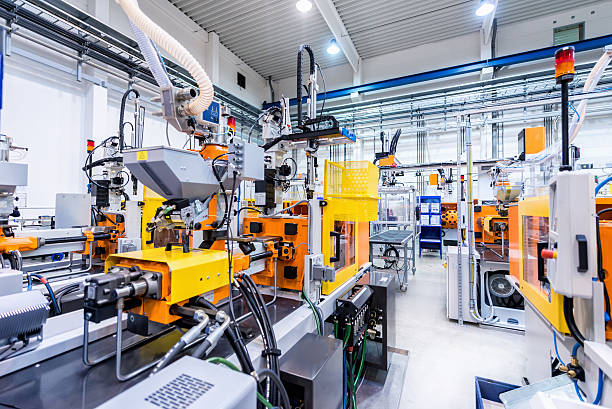
Plastic injection molding can virtually create anything made of plastics and their polymers. In addition, it is used to fabricate thin-walled plastic parts, used for several other purposes. The commonest of such is plastic housing used to produce various plastic products such as household appliances, insulating parts of electronics, the dashboards of automobiles, etc.
Process: Steps Involved in Injection Molding
The processes are virtually the same as those of aluminum injection molding. Though other than raw materials, there are other subtle differences. We will discuss them later. That said, how does injection molding work? Below are the processes to follow when fabricating plastic parts using the injection molding technique.
Step 1: Mold Preparation
Prepare the mold for the injection molding process by lubricating it. Spray the mold with an ideal lubricant. Mold lubrication aids temperature regulation within the mold and allows for easy ejection of products after molding.
Step 2: Filling
Pass the liquefy (molten) plastic materials into the aluminum molds at high pressure. Maintain the high-pressure conditions of the mold as the molten plastic cools, taking the form of the mold.
Step 3: Cooling
Spray (or immerse) the mold with (in) water to quicken the cooling process.
Step 4: Ejection
Proceed to open the mold once it has cooled. Eject and collect your product as you have completed the injection process. If necessary, the manufacturer can carry out further processing operations like finishing.
Pros of Injection Molding
For one of the most used manufacturing processes in fabricating plastic parts, you’d expect it to have lots of benefits. If you think so, you are correct. Below are some of the notable benefits of the plastic injection molding technique.
- Injection molding is very flexible. It permits several kinds of plastics, resins, and other polymers.
- The process is very efficient and gives rise to products with a smooth and fine finish.
- It is a quick manufacturing process, especially if you intend to produce a large number of products.
- It is a cost-effective process. Less labor needed, and almost zero wastage of resources.
- The addition of fillers in the mold increases the strength of the products.
- If done correctly, with all necessary precautions maintained. Expect the products obtained of top quality.
Cons of Injection Molding
Before fabricating your products using this technique, you need to be aware of its shortcomings, which include:
- The cost of operations may be dear, especially when trying to purchase the necessary equipment.
- The setup time of equipment can be lengthy. The complexity of the machine and the essential requirement to rid it of all remnants of previous materials are reasons.
- Precautions to follow to ensure maintaining high quality may be cumbersome.
Die Casting vs Injection Molding: Comparing Their Differences
We earlier mentioned that other differences exist between die casting vs injection molding other than materials used. Let’s discuss these differences under the following headings.
Process Capabilities
If you read through the processes of each method as earlier discussed, you would notice they are basically the same, including each step. However, the raw material used and the physical conditions of either technique differ.
It is vital to regulate the temperature in plastic injection molding. The barrel temperature, nozzle temperature, and mold are dissimilar. Inadequate or excessive temperature will lead to flaws in the product.
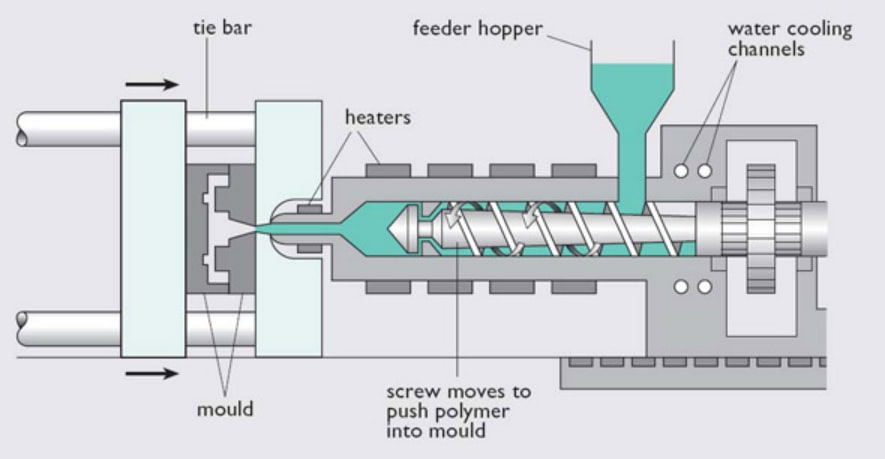
The barrel temperature is often between 300 to 800°F while that of the molds is lower and needs to be well regulated. Passing water around the mold is one good way of regulating temperature. The mold temperature ranges from 150 to 350°F. In die casting, temperature regulation isn’t all that important. The temperature of the mold could be as high as 700°F.
Pressure is another area. The pressure at which molten metal fills the cavity is between 15 to 100 MPa. For plastic injection molding, the pressure is specific to the plastic-type.
Precision and Tolerances
The metal alloy used in die casting determines the tolerance of the part produced. Each metal has a standard tolerance rating. Of course, the size and functionality are factors for this. However, die-casted materials tend to have a high tolerance with incredibly high precision.
As a rule, tighter tolerance leads to higher precision products. However, it is best to follow the industrial tolerance standards when manufacturing products using the die casting process. Die casting products tend to have greater precision and tolerance than those produced by plastic injection molding.
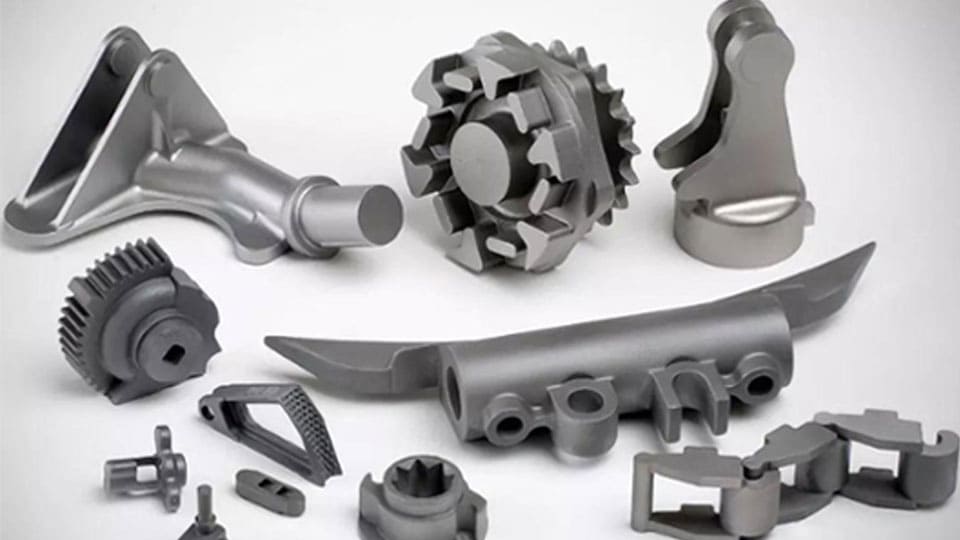
It is not good enough to produce high-precision parts using injection molding. Instead, make use of die casting or other manufacturing processes like machining. In injection molding tolerance of the product is critical when dealing with large-sized products or parts.
Materials Differences
Die casting uses metals and alloys as its raw material. On the other hand, injection molding has a broader range of materials options. Other than plastic injection molding, where plastics, resins, and other polymers are the raw materials, other forms of injection molding where metals are raw materials exist.
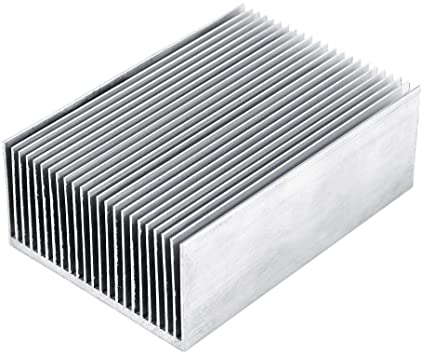
Steel and aluminum injection molding are typical examples of metals and alloys used as raw materials for this popular manufacturing process. It is an indication that injection molding is a broader process with more material options.
Surface Finishing Options
Frequently, we say the manufacturing process isn’t complete until finishing. However, final products of die casting tend to have a good surface finish. It’s one of the perks of this process. Extra finishing done is merely for aesthetics. Finishes in injection molding, too, aren’t compulsory. Again, however, more frequently done than in die casting.
Surface finishing options for die casting include anodizing, powder coat, chem film, gold plating, impregnation, etc. These finishes are primarily for increasing aesthetics, durability, thickness, mechanical and chemical resistance. Finishes for injection molding can be grouped into four broad categories: degating, deflashing, cleaning, and decorating.
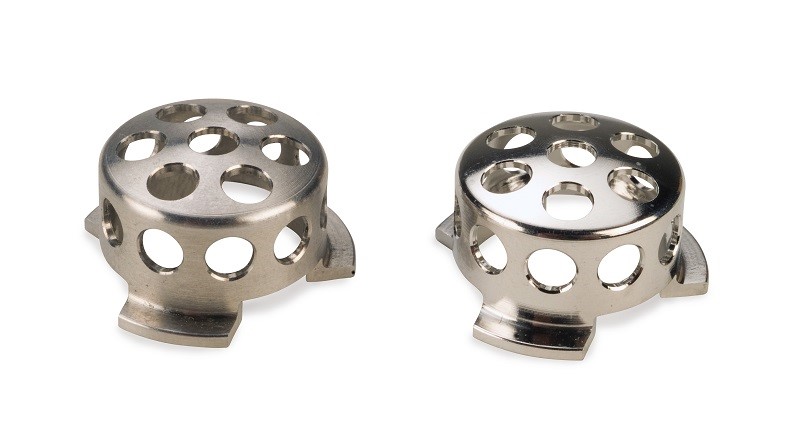
Degating involves the removal of protrusions and intrusions that would normally disfigure the shape of our product. These protrusions are what we refer to as gates. Deflashing rids the product of all other excesses from the molding process. The finishes aid in improving the product’s shape (or form). Cleaning helps to ensure that the product is spotless – no more extending or protruding plastic materials. Then we can proceed to decoration, especially when we want to increase the aesthetics of our product.
Applications Differences Between Injection Molding and Die Casting
Die casting is ideal for fabricating medium and small-sized parts with intricate details. It is used to cast industrial and commercial products like faucets, automobiles, hard wares, sinks, gears, etc. Provided the metal parts are not too large, die casting is your ideal choice.
Injection molding is the most used technique for producing substances out of plastics. Unlike die casting, it is suitable for the production of large objects. They are used in creating things like kid’s toys, hair combs, wire spools, mechanical parts, plastic tables, and many other plastic products.
Tooling and Manufacturing Costs
The total costs of die casting consist of labor and equipment. Since the process involves less labor, the cost is essentially a factor of the tools and equipment needed to carry out the operation. For high-precision die casting, the tooling cost is expensive. In fact, they rank amongst the highest of any top-notch manufacturing process.
During the production process, the steel components of the die are prone to die erosion in the form of them losing their sharp edges. The fine details also tend to lose acuity. All these add up to more tooling costs. You want your product to be in perfect shape. Adjusting designs into something simple is a way of reducing tooling costs.
Injection molding, on the other hand, is relatively cheaper. Factors affecting injection molding costs include the raw material and the part’s complexity. However, tuning down design complexity and using finishes only when necessary are means of cutting down the cost.
The cost of fabricating a unit product using plastic injection is way cheaper compared to die casting. Notably, it is one of the most cost-effective manufacturing processes. The exciting part is that the larger the number of units you produce, the cost of production gets relatively cheaper. Like in many other production processes, the start-up cost seems high. However, once you have the machine and materials, it is affordable.
Die Casting vs Injection Molding: Comparing Their Molds
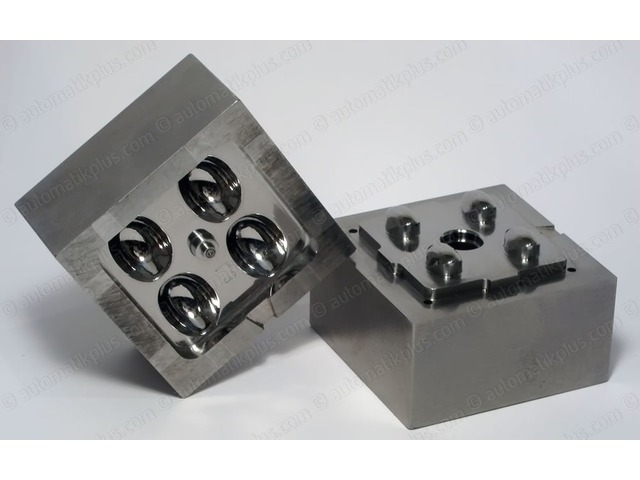
Although both processes work similarly, there are differences between die casting molds and injection molds. See below for details.
- Die casting mold requires high injection pressure, so it should be relatively thick to prevent deformation and cracking after heat treatment.
- Die casting mold should needs to decompose the high pressure of the material flow by using a diversion cone, because the gate of it is different from that of injection mold.
- The cavity of die casting mold will reach a very high temperature (above 700 degrees) during die casting, so it doesn’t need to be quenched. But injection molds need to be quenched.
- Die casting tooling is highly corrosive, so its surface usually do treatment.
- To exhaust gas out of a die casting mold, you have to open the exhaust slot and slag collection bag. While injection mold only needs ejector pins and a parting surface.
Die Casting vs Injection Molding: Which Process Is Best for You?
Reading this piece thus far, you’ve probably noticed that both manufacturing techniques are great options. The questions to answer now include: what process is the best for me? Which is more effective? It’s actually not as difficult as it may seem.
That said, when choosing between plastic injection molding vs die casting. The first thing is to look at the part’s functionality you intend to fabricate. It simplifies the selection process. Next, you juxtapose the pros and cons of either method to the part’s functionality. Then you can easily decide on which technique is better.
Die casting is not ideal for materials with high fluidity under high pressure. Also, when fabricating large size parts, use injection molding. However, when manufacturing high-complexity parts that require high precision and accuracy. Then it is a no-brainer. Go with die casting. It is the better choice for such products.
There are times when both processes are good enough for our intended product. Then we can look at budget constraints, especially when trying to minimize costs. Remember, injection molding is relatively cheaper than die casting. However, the choice is ultimately yours, the manufacturer, as both are great options.
RapidDirect – Your Leading Die Casting and Injection Molding Services Provider
Knowledge of the process, the advantage of each other, and the differences between either manufacturing process aren’t enough. Working with the right manufacturing partner is very important!
RapidDirect is the leading provider of die-casting and injection molding services. We boast highly skilled and knowledgeable technicians who have a vast knowledge of these and other related technologies. We offer top-notch services and high-quality die casting parts and injection molding parts at competitive prices to our customers at a fast lead time. In just a short time, we deliver quality.
Also, we are an ISO 9001:2015 certified company. Hence, be rest assured that all our materials and techniques are of the best quality. After all, you’d expect nothing less from an industry-leading company. You could also reach out to us for professional suggestions that will help improve your designs.
Conclusion
The numerous comparisons between die casting vs injection molding show that both processes are great options for manufacturing top-quality products. After all, they are two of the most used techniques by many manufacturing industries of the world. Both methods have benefits over the other. Understanding the processes and the pros and cons of either method makes it easy to choose which techniques to use.
This choice should depend on what you intend to produce. Some say die casting yields superior products. However, plastic injection molding also delivers premium-quality products out of plastic. It all depends on what you, the manufacturer, want.
Plastic Injection Molding vs Die Casting FAQs
These two techniques – metal injection molding (MIM) and casting, are even more similar than plastic injection molding and casting in that they both use metals. However, they use different metal types. Die casting uses essentially aluminum, zinc, and some other non-ferrous metals. Metal injection molding takes advantage of steel and some other MIM alloys.
Dies and molds are shaping tools. The shape of the die and mold used is the form our products take in die casting and injection molding, respectively. Dies aid in shaping molten metals and alloys, while molds shape molten resins or other plastic polymers.
These two are another pretty similar production process. However, the difference is not in the materials used, but in the materials that make up the molds. Die-cast makes use of a metal (often steel) mold, while sand casting, as the name suggests, makes use of a sand mold. That makes it a cheaper manufacturing process. However, die casting is a faster production technique.


